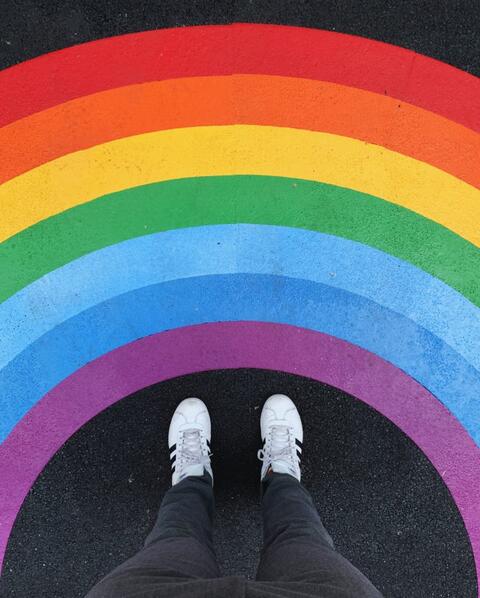
By: Kris Sanchez, KIPP Kindergarten Teacher
“So you’re telling me, boy bunnies can marry other boy bunnies?”
Conversations like this can be heard in my class every time I read the book, “A Day in the Life of Marlon Bundo” by Late Night’s John Oliver. My name is Kris Sanchez, aka Mr. K to my little ones, and I am a zesty Kindergarten teacher in Los Angeles, CA. I have been at KIPP since 2016 and am a proud queer Asian-Latinx educator.
When I first made the decision to read a book with queer characters to young children I felt sick. “How will the kids react to this story?” “What will parents say?” “Will I be met with the hurtful backlash?” “How will I feel after reading this book knowing my identity could be invalidated?”
My sword and shield for this lesson came from the Human Rights Campaign. There are so many resources out there for us to use to incorporate these topics in our classes and in the homes. You see, I learned pretty late in my teaching career about the Learning for Justice’s Social Justice Standards. These are a set of standards for all grade levels that lay out the framework for anti-bias instruction. For me, anti-bias was always centered around race exclusively. I realized I was doing an injustice to not only my students but to myself by ignoring the complexities of intersectionality — a word my 5-year-old students understand very well.
They know this fancy word means that we are a beautiful bouquet of flowers. Each flower is different yet important. One flower is pretty all by itself but a whole bunch of them? That’s special and beautiful.

The way I walk through this world as a person of color cannot be talked about unless I include my cis male queer identity. If this is what I truly believe, shouldn’t I take this approach with my students? The big question, and probably the hardest to answer, is how?
After the completion of the mental Olympics in my head, I read the book and gave quite an award-winning performance I must add (as most teachers do during read-aloud). When the book was over, I asked students questions that I believed were open-ended enough to spark great discussion and provide not only a window into this identity but a mirror into their own. “How is the family in the book the same as your family?” The conversation was as heartfelt as you could imagine from 5-year-olds, but the real tear-jerkers came from the second discussion we had.
“Do you know anyone else who is in a loving relationship like the boy bunnies in this book?” I asked.
“My mommy and daddy love each other.”
“Mi abuela y mi abuelo aman.”
“I love my dogs.”
“Me too!” “Me three!” “I love my dogs in my family too!”
After getting students’ attention to close out the discussion, I couldn’t help but have a beaming smile as I continued to hear one Kindergartener after another make connections to the two boy bunnies in love with one another. Then, all of sudden, it clicked.
As much as we work towards incorporating different identities, heritages, and communities in our classroom that validate the existence of the students we serve, we must not forget the beautiful bouquets that our students are.
I think back to my own schooling and reflect on how impactful it would have been for just one teacher to read a book that validated my queer identity. I often also reflect on how validating it would have been for others in the LGBTQIA+ who are no longer with us. We know representation matters but I would argue that colorful, diverse representation matters more.
So for teachers, parents, and administrators, my push for you this Pride month is to consider all the different bouquets that you come into contact with each day at your school. Be intentional about how you water and nourish those flowers that represent your beautiful student. As I close, I charge you with this question:
Could one story about two boy bunnies change the life of a potential queer kid? The answer is most certainly yes.
Here are some linked resources for this Pride Month as mentioned in the above blog post:
- A Day in the Life of Marlon Bundo Lesson Plan
- Human Rights Campaign FREE Resources for implementing LGBTQ+ Topics in the classroom setting
- Laws and Policies regarding LGBTQIA+ Students in Schools
- Preparing for Concerns regarding LGBTQIA+ Identity
- Top Books for K-12 educators for incorporating LGBTQ Topics in the classroom
The story was originally published on the KIPP Foundation.

About the Author: Kris Sanchez is a 5th-year Kindergarten teacher at KIPP. He has mentored new teachers through Teach for America and KIPP SoCal’s Alder Mentor program. He also leads teachers and staff in professional development strands in LGBTQIA+ topics.
